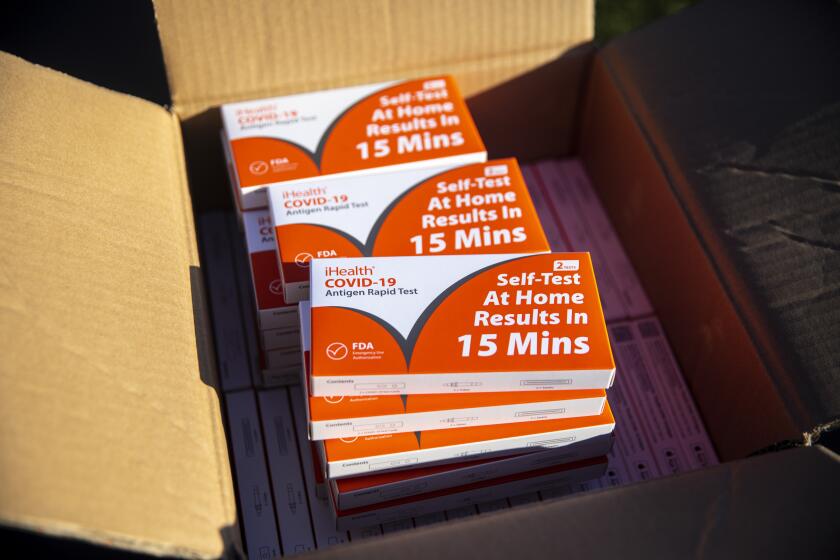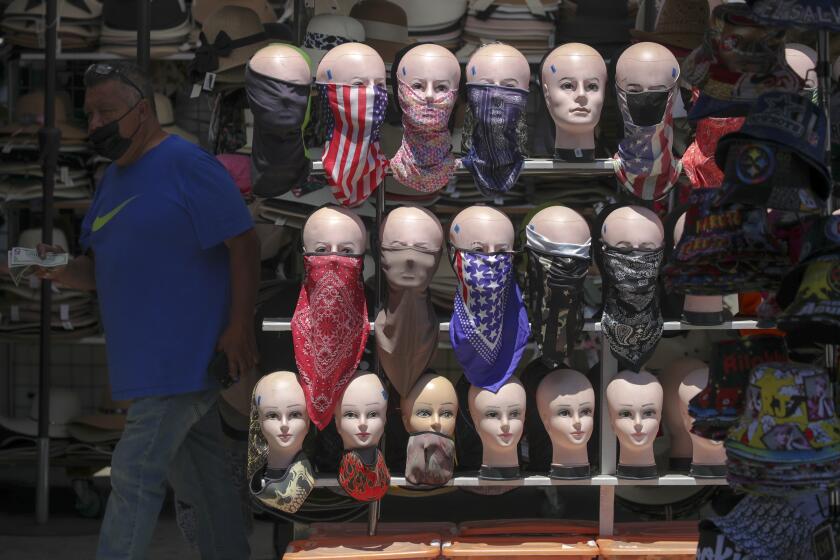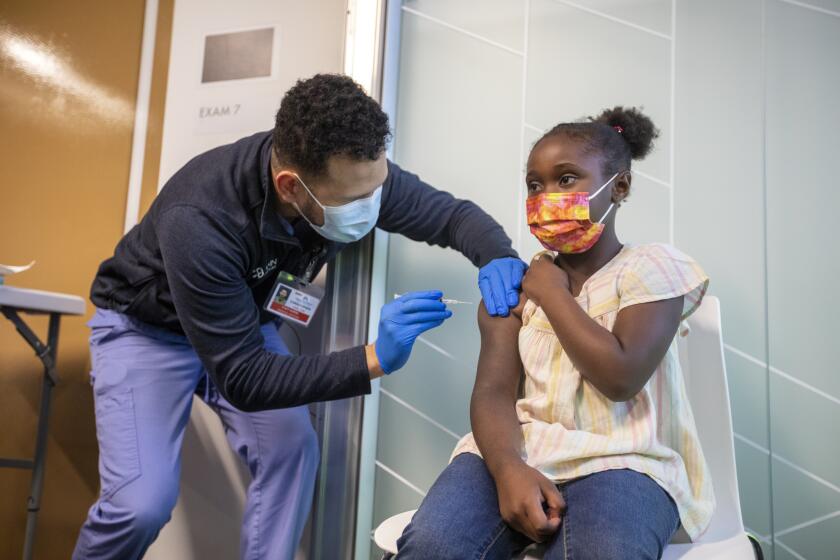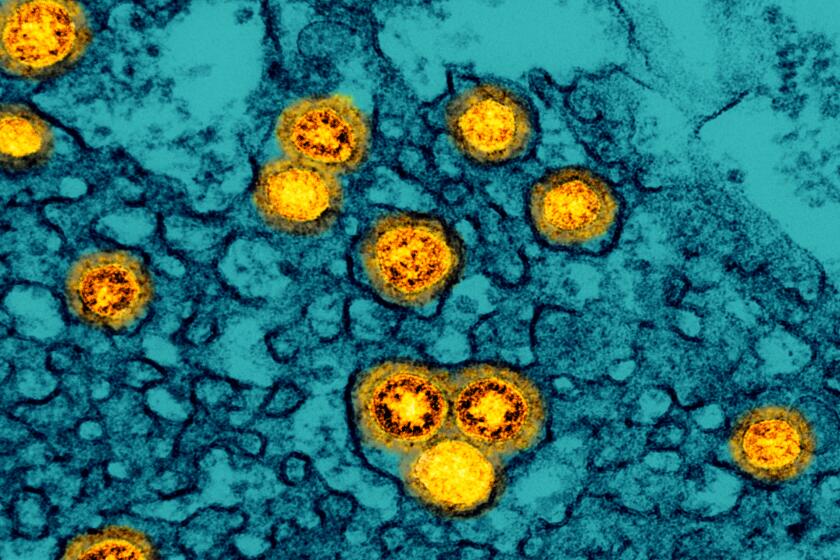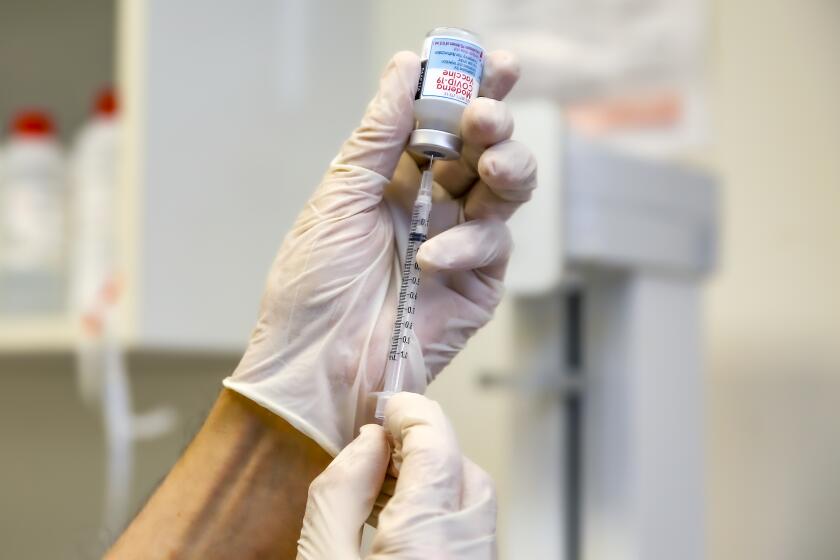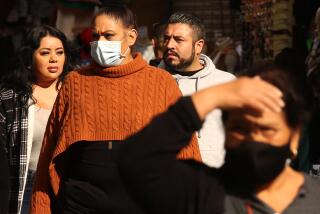These California workers were hit hard by COVID-19, new study shows
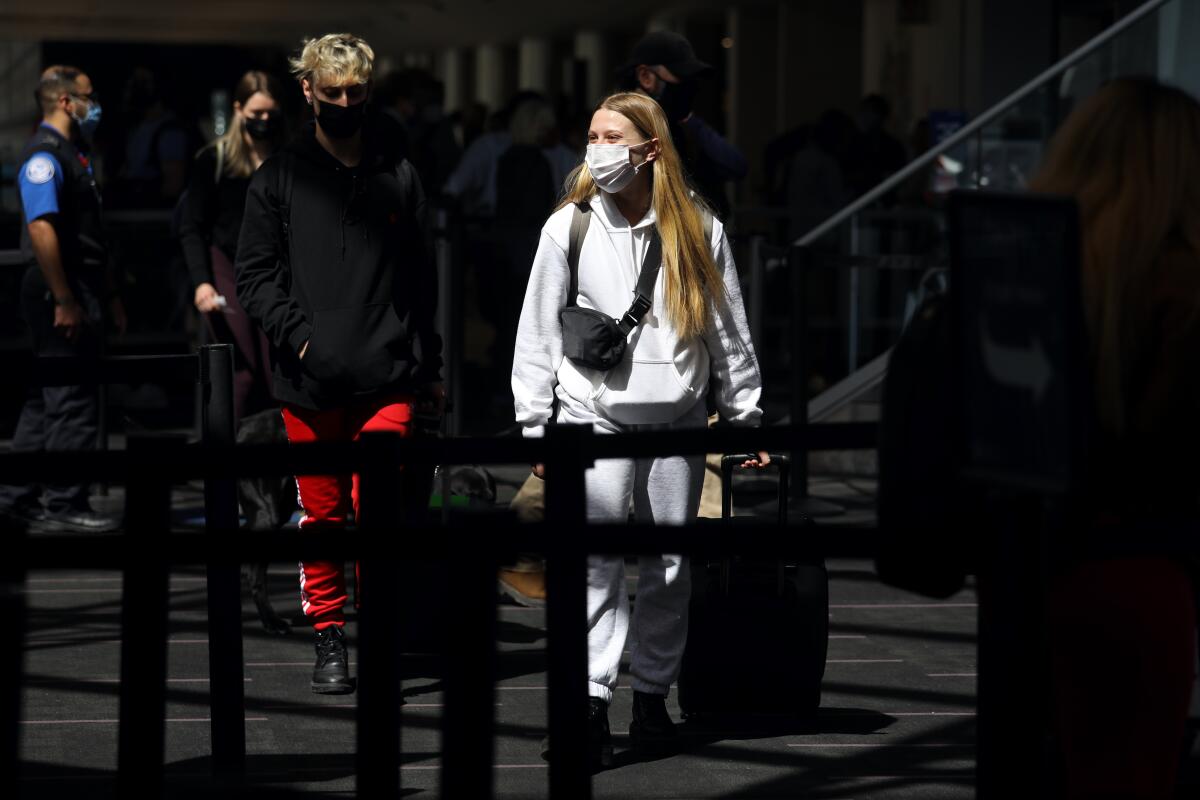
COVID-19 hit public transit employees disproportionately harder than other workers, according to a new study by California health officials.
The study, led by the California Department of Public Health and published Thursday by the U.S. Centers for Disease Control and Prevention, provides an overview of the toll the pandemic has taken on transportation workers, raising fresh questions about the role of public health interventions, including masks, in these settings.
Employees in the public transit and air industries were far more likely to have COVID-19 outbreaks at their job sites compared with workers in general, the study found.
And compared with employees in all industries, workers for bus and rail services were twice as likely to die from COVID-19.
“Workers in public transportation industries are at higher risk for COVID-19 workplace outbreaks and mortality than the general worker population in California and should be prioritized for COVID-19 prevention strategies, including vaccination and enhanced workplace protection measures,” the report said.
Health officials stress that at-home tests are a vital and accurate way of tracking COVID-19 infections but an initial negative test doesn’t mean people are out of the woods.
Though she hadn’t read the study herself as of Thursday afternoon, L.A. County Public Health Director Barbara Ferrer said there’s been “other evidence that’s accumulated over the course of the pandemic that indicated that transit workers were experiencing higher case rates and higher illness severity” — likely due to unavoidable on-the-job exposures and less-than-robust ventilation in some work settings.
The study identified 340 confirmed outbreaks of COVID-19 in California public transportation industries over a 29-month period, from the start of the pandemic through May. Scientists identified 5,641 coronavirus cases associated with those outbreaks and 537 COVID-19 deaths.
During that time frame, there were 24.7 COVID-19 outbreaks for every 1,000 workplaces in all California industries combined, the study found. But the rates specific to public transit sites were much worse.
There were 87.7 outbreaks for every 1,000 workplaces in air transportation over the same time period, and a whopping 129.1 outbreaks for every 1,000 workplaces in the bus service and urban transit industry.
In other words, COVID-19 outbreaks were 3½ times as likely in the air transportation industry and five times as likely on bus service and urban transit workplaces compared with California industries overall, according to the study’s findings.
Officials recommend that employers take steps to reduce crowding and, if there’s a suspected outbreak, expand options for remote work.
Cumulative COVID-19 death rates were much higher among some public transportation industries. Specifically, workers for rail transportation; bus service and urban transit; and transportation support services such as maintenance, airport cargo and airport terminal service employees were twice as likely to die during the period examined in the study compared with California industries overall.
For all industries in the state, scientists found 114.4 COVID-19 deaths for every 100,000 employees. By comparison, there were 211.5 deaths for every 100,000 workers in the bus service and urban transit industry; 237.4 deaths for every 100,000 workers in transportation support services; and 241.8 deaths for every 100,000 workers in the rail industry.
However, workers in air transportation were less likely to die from COVID-19 than those in California industries overall. There were 91.3 COVID-19 deaths for every 100,000 air transportation employees in the state.
The CDC has updated its COVID-19 guidance in an effort to make things less confusing to Americans. Here’s what the agency recommends.
The study used outbreaks reported to local health departments in California and deaths from the state’s COVID-19 case registry that were matched to death certificate data, which include information about a decedent’s occupation.
Of the 340 COVID-19 outbreaks identified, the vast majority of them — 57% — occurred in bus and urban transit workplaces.
But the largest share of cases occurred in the air industry. Of the 5,641 coronavirus cases associated with outbreaks in the transit industry, 43% occurred in air transportation.
And the largest share of deaths — just over 50% — occurred among workers in the transportation support services sector.
In terms of outbreaks, the highest monthly number was reported in December, during the first Omicron wave.
The highest monthly number of deaths in the transportation industry occurred during the pandemic’s initial fall-and-winter wave, when there were more than 80 per month. The next highest tally was during the peak of the Delta wave last September, when there were nearly 50.
During the height of the first Omicron wave in January, there were fewer than 30 monthly deaths.
By comparison, the number of outbreaks was highest during the first full month of the fall-and-winter Omicron surge, when there were nearly 80. That sum was far larger than the prior monthly peak, when there were more than 40 outbreaks in December 2020.
Conventional wisdom says Omicron is less likely to cause serious illness, but that might be due to better immunity and treatments, not the virus itself.
The authors noted that outbreak data collected in 2021 may be more complete than 2020 figures, in part because of a California public health order requiring employers to report workplace clusters of three or more coronavirus-positive cases to local health departments. In 2020, outbreak-reporting requirements varied depending on local rules.
“Regardless of whether exposures occur from interactions with the public, co-workers, or other sources, these observations indicate that public transportation workers represent a vulnerable group who should be prioritized for COVID-19 prevention strategies,” the authors wrote. “Such strategies can include targeted vaccination efforts, access to antiviral treatments, public health messaging, and enhanced workplace protection measures, such as improved ventilation and use of well-fitted masks or respirators (e.g., N95s) by workers and members of the public.”
Most parts of California no longer require masking on public transportation. However, L.A. County continues to require face coverings on public transit and indoor transportation hubs, including Los Angeles International Airport and Hollywood Burbank Airport.
The new booster ‘will become available by early to mid-September,’ if the FDA and CDC authorize shots, a top White House official said this week.
The San Francisco Bay Area Rapid Transit system also requires masks to be worn on its 131-mile, 50-station commuter rail network.
Ferrer said L.A. County is not planning, at this moment, to lift its masking rules in indoor transit hubs or aboard public transportation.
County health officials believe those are higher-risk settings where it’s beneficial to require masking. Face coverings also remain required in healthcare and long-term-care facilities, emergency shelters, cooling centers, jails and prisons.
“We continue to consider transit and transit hubs as places where we really should add in an extra layer of protection, particularly when transmission is high,” Ferrer said.
More to Read
Sign up for Essential California
The most important California stories and recommendations in your inbox every morning.
You may occasionally receive promotional content from the Los Angeles Times.
